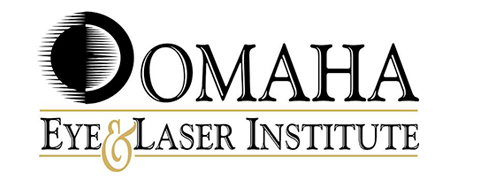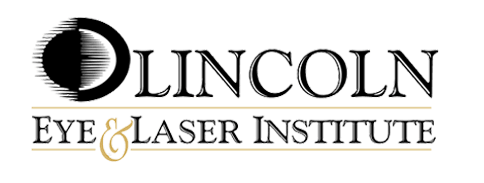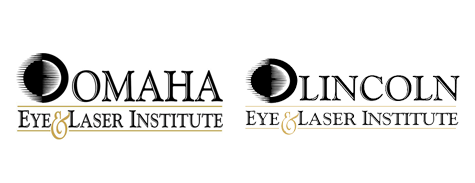Are you finding yourself holding menus at arm’s length to read them? Struggling to see text messages without grabbing your reading glasses?
If you’re over 40 and experiencing these frustrations, you’re likely dealing with presbyopia. While you might have seen ads, blogs, or videos claiming that eye exercises can strengthen your vision and reverse presbyopia, the medical reality tells a different story.
Keep reading to learn the facts about presbyopia and how you can actually improve your vision with ophthalmologist-trusted treatments.
What is Presbyopia?

Presbyopia occurs when the natural lens of your eye loses flexibility with age, making it difficult to focus on close objects. When you’re young, the natural lens in your eye is flexible and can easily change shape to focus on objects at different distances.
As you age, this lens gradually becomes more rigid. This stiffening process typically becomes noticeable around age 40-45, causing difficulty with near-vision tasks such as reading, sewing, or viewing a smartphone.
Despite claims you may have seen online, this is a physical change to your eye’s lens that cannot be reversed through exercises. Eye exercises may help with certain visual skills, such as tracking or coordination, but they cannot restore the physical flexibility of your eye’s lens.
This is why the ophthalmologists at The Omaha and Lincoln Eye and Laser Institute recommend proven medical interventions, such as refractive lens exchange.
What is Refractive Lens Exchange?
Refractive lens exchange (RLE), also known as clear lens exchange (CLE), is an advanced vision correction procedure that effectively addresses presbyopia by replacing the eye’s natural lens with an artificial intraocular lens (IOL). This state-of-the-art procedure not only corrects presbyopia but also addresses other refractive errors, such as nearsightedness, farsightedness, and astigmatism.
How Refractive Lens Exchange Works
During this remarkably straightforward procedure, your eye surgeon at The Omaha and Lincoln Eye and Laser Institute will:
- Numb your eye with anesthetic drops to ensure your comfort
- Make a tiny incision in your eye
- Use ultrasound technology to gently break up and remove your natural lens
- Insert a customized IOL specifically selected to match your vision needs
The entire procedure typically takes only 15-20 minutes per eye, and most patients have their second eye treated within one to two weeks. While you’ll be awake during the procedure, you’ll likely experience nothing more than slight pressure.
Why Refractive Lens Exchange Outperforms Other Options

Unlike temporary solutions such as reading glasses or bifocals, RLE provides a permanent correction to presbyopia. Here’s why it stands out among vision correction options:
Comprehensive Vision Improvement
RLE doesn’t just address presbyopia. It can simultaneously correct multiple vision issues, including nearsightedness and astigmatism.
This makes it particularly valuable for patients with complex vision needs.
Prevention of Future Cataracts
One significant advantage of RLE is that it eliminates the possibility of developing cataracts later in life. Since cataracts form in the natural lens of the eye and RLE replaces this lens with an artificial one, cataract surgery will never be needed in the future.
This preventative benefit makes RLE a forward-thinking choice for your long-term eye health.
Advanced Lens Options
At The Omaha and Lincoln Eye and Laser Institute, we offer several cutting-edge intraocular lens options to match your lifestyle and vision goals:
Clearview IOL
The Lenstec ClearView 3 IOL features unique seamless transition zones for excellent vision at all distances with minimal visual disturbances.
Odyssey IOL
This Johnson & Johnson lens delivers continuous vision from near to far with enhanced contrast sensitivity and superior performance in low-light conditions.
Distance Vision IOL
This IOL corrects both astigmatism and either nearsightedness or farsightedness in a single procedure.
PanOptix IOL
This premium lens provides clear vision at three distinct distances while minimizing unwanted visual effects like glare and halos.
Are You a Candidate for Refractive Lens Exchange?

RLE might be an excellent option if you:
- Are over 40 and experiencing presbyopia
- Are not a good candidate for LASIK or PRK due to thin corneas or other factors
- Want to prevent developing cataracts later in life
- Desire greater independence from glasses or contact lenses
The best way to determine if RLE is right for you is through a comprehensive eye examination. At The Omaha and Lincoln Eye and Laser Institute, our skilled ophthalmologists will thoroughly evaluate your vision, discuss your lifestyle needs, and review your health history to determine if you’re a good candidate.
We understand that choosing vision correction surgery is a significant decision. That’s why we take the time to thoroughly explain all options, answer your questions, and create a personalized treatment plan tailored to your specific needs and goals.
Presbyopia Treatment that Actually Works
Don’t waste time doing ineffective eye exercises or continue struggling with the limitations of reading glasses. Refractive lens exchange offers an ophthalmologist-trusted alternative that can help you achieve crisp, clear vision and freedom from visual aids.
Schedule a consultation at The Omaha and Lincoln Eye and Laser Center in Omaha and Lincoln, NE, today to discover if RLE is right for you!





